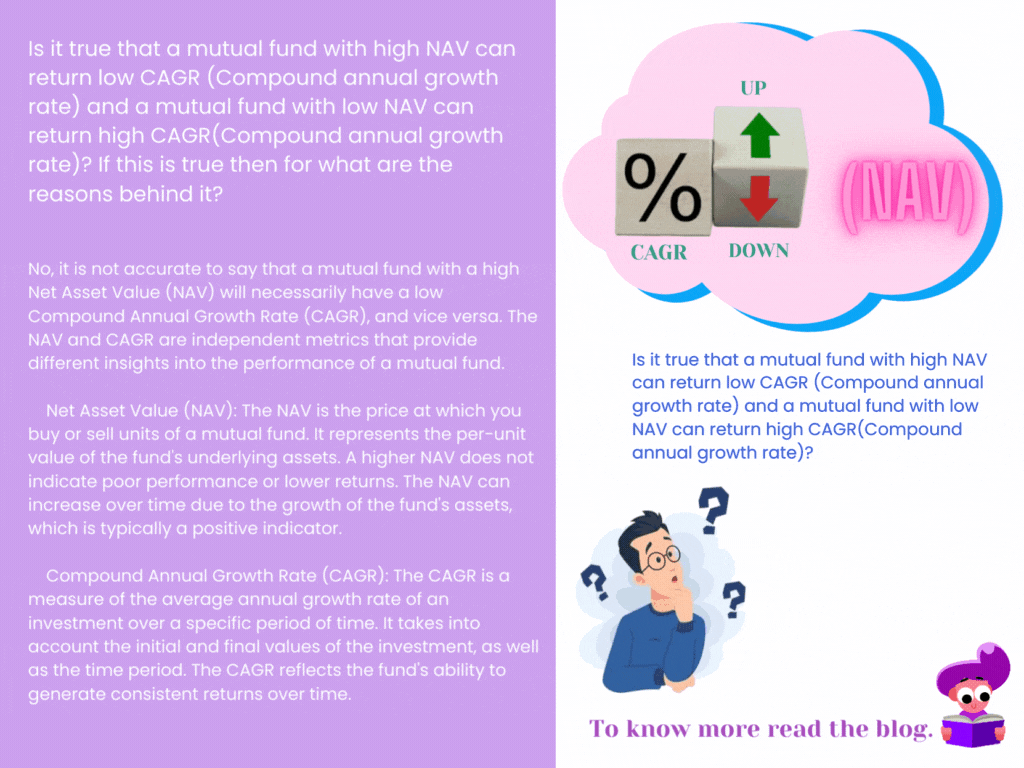Is it true that a mutual fund with high NAV can return low CAGR (Compound annual growth rate) and a mutual fund with low NAV can return high CAGR(Compound annual growth rate)? If this is true then for what are the reasons behind it?
No, it is not accurate to say that a mutual fund with a high Net Asset Value (NAV) will necessarily have a low Compound Annual Growth Rate (CAGR), and vice versa. The NAV and CAGR are independent metrics that provide different insights into the performance of a mutual fund.
Net Asset Value (NAV): The NAV is the price at which you buy or sell units of a mutual fund. It represents the per-unit value of the fund's underlying assets. A higher NAV does not indicate poor performance or lower returns. The NAV can increase over time due to the growth of the fund's assets, which is typically a positive indicator.
Compound Annual Growth Rate (CAGR): The CAGR is a measure of the average annual growth rate of an investment over a specific period of time. It takes into account the initial and final values of the investment, as well as the time period. The CAGR reflects the fund's ability to generate consistent returns over time.
The relationship between NAV and CAGR is not straightforward, and several factors influence a fund's CAGR:
Quality of Investments: The performance of a mutual fund is primarily influenced by the quality and performance of its underlying investments, not just the NAV.
Market Conditions: Market conditions, economic factors, and the fund's investment strategy play a significant role in determining its returns.
Expense Ratio: The expense ratio is the annual fee charged by the fund and impacts the fund's returns. Lower expense ratios can contribute to higher CAGR.
Market Timing: The timing of your investments also affects your returns. Investing at a low NAV doesn't guarantee high CAGR if the fund's performance doesn't align.
Dividend Distribution: Some funds distribute dividends, which can affect the NAV but may not necessarily impact the CAGR.
Asset Allocation: The fund's asset allocation and investment strategy play a crucial role in determining returns.
It's important to focus on the fund's historical performance, investment strategy, expense ratio, risk profile, and alignment with your financial goals and risk tolerance. Instead of solely focusing on NAV or CAGR, consider a holistic evaluation of the fund's characteristics. Past performance is not indicative of future results, and it's recommended to consult with a financial advisor before making investment decisions.


